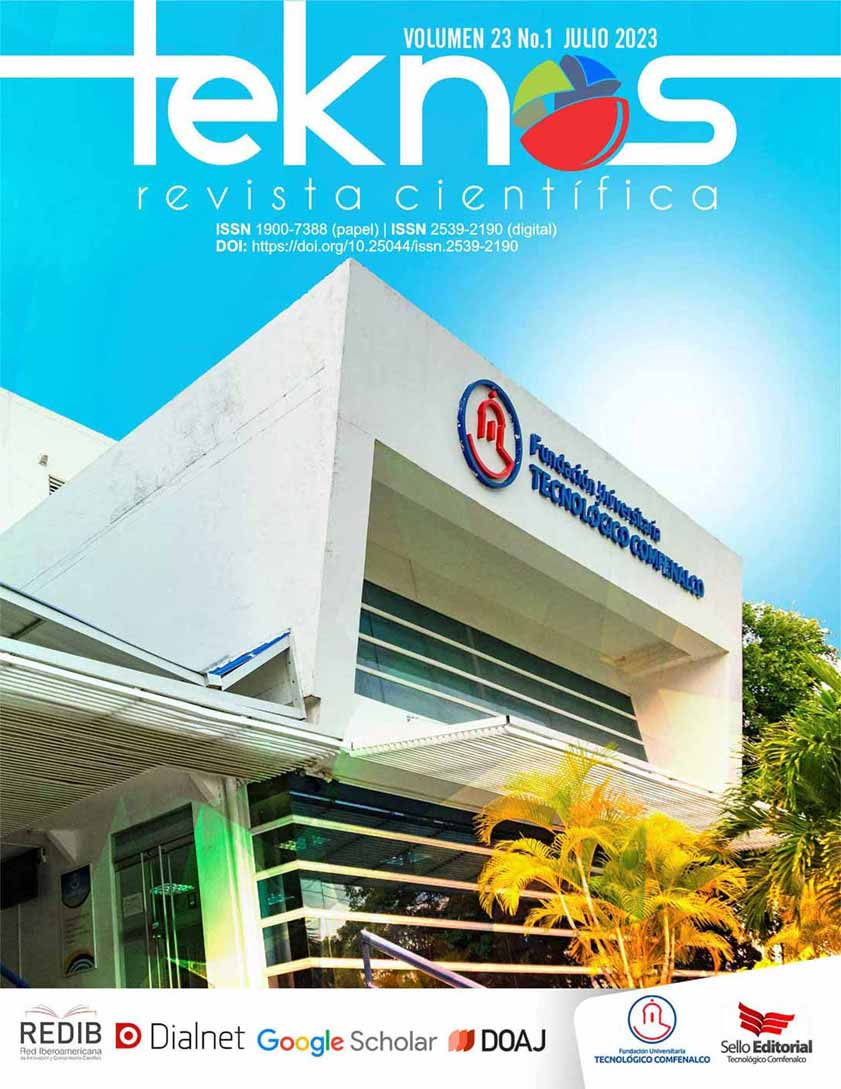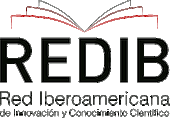Theoretical study of dengue virus protease NS3 and interaction with Bowman Birk-type inhibitors
DOI:
https://doi.org/10.25044/25392190.1057Keywords:
Enzima NS3, virus del dengue, inhibidor de tipo Bowman BirkAbstract
Currently, dengue is considered one of the viral infections that most affect tropical areas in the world and is transmitted to humans by the Aedes aegypti mosquito. The objective of this study was to evaluate the interactions between the dengue virus NS3 protease and compounds derived from flavonoids and Bowman-Birk-like inhibitors. Initially, the 3D structures of the NS3 and NS3/NS2B proteases were evaluated, and the compounds to be studied were optimized using the Sybyl 7.3 and Gaussian 03 programs, respectively. Molecular docking was carried out using the FlexX and EHits 2.0 packages. The studied compounds exhibited a linear relationship between the experimental and theoretical inhibition constants for the NS3 enzyme. However, this behavior did not occur for the NS3/NS2B enzyme. Therefore, it is expected that the mimetic peptides (Bowman-Birk type) have a greater preference for the initial stage of viral replication. Among the inhibitors with the highest potential were the peptide mol 18r (Bowman-Birk type) and the flavonoid derivative panduratin2. Therefore, this study contributes to the design and computational screening of new dengue virus inhibitors using the NS3 enzyme as a template."
Downloads
References
Arias, C. F., Preugschat, F., & Strauss, J. H. (1993). Dengue 2 virus NS2B and NS3 form a stable complex that can cleave NS3 within the helicase domain. Virology, 193(2), 888–899. doi: 10.1006/viro.1993.1198.
Bessaud, M., et al. (2005). Identification and enzymatic characterization of NS2B-NS3 protease of Alkhurma virus, a class-4 flavivirus. Virus Research, 107(1), 57–62. doi: 10.1016/j.virusres.2004.06.015.
Chanprapaph, S., et al. (2005). Competitive inhibition of the dengue virus NS3 serine protease by synthetic peptides representing polyprotein cleavage sites. Biochemical and Biophysical Research Communications, 330(4), 1237–1246. doi: 10.1016/j.bbrc.2005.03.107.
Chappell, K. J., Stoermer, M. J., Fairlie, D. P., & Young, P. R. (2008). West Nile Virus NS2B/NS3 protease as an antiviral target. Current Medicinal Chemistry, 15(27), 2771–2784. doi: 10.2174/092986708786242804.
Droll, D. A., Krishna Murthy, H. M., & Chambers, T. J. (2000). Yellow fever virus NS2B-NS3 protease: charged-to-alanine mutagenesis and deletion analysis define regions important for protease complex formation and function. Virology, 275(2), 335–347. doi: 10.1006/viro.2000.0488.
Erbel, P., et al. (2006). Structural basis for the activation of flaviviral NS3 proteases from dengue and West Nile virus. Nature Structural & Molecular Biology, 13(4), 372–373. doi: 10.1038/nsmb1073.
Gao, M., Waggoner, J. J., Hecht, S. M., & Chen, S. (2019). Selective Detection of Dengue Virus Serotypes Using Tandem Toehold-Mediated Displacement Reactions. ACS Infectious Diseases, 5(11), 1907–1914. doi: 10.1021/acsinfecdis.9b00241.
Gulati, K., & Poluri, K. M. (2016). An Overview of Computational and Experimental Methods for Designing Novel Proteins. Recent Patents on Biotechnology, 10(3), 235–263. doi: 10.2174/1872208310666161013152249.
Gueto, C., Torres, J., & Vivas-Reyes, R. (2009). CoMFA, LeapFrog and blind docking studies on sulfonanilide derivatives acting as selective aromatase expression regulators. European Journal of Medicinal Chemistry, 44(9), 3445-3451.
Gubler, D. J. (1998). Dengue and Dengue Hemorrhagic Fever. Clinical Microbiology Reviews, 11(3), 480–496. doi: 10.1128/CMR.11.3.480.
Korshunova, M., Ginsburg, B., Tropsha, A., & Isayev, O. (2021). OpenChem: A Deep Learning Toolkit for Computational Chemistry and Drug Design. Journal of Chemical Information Modeling, 61(1), 7–13. doi: 10.1021/acs.jcim.0c00971.
Laille, M., Gerald, F., & Debitus, C. (1998). In vitro antiviral activity on dengue virus of marine natural products. Cellular and Molecular Life Sciences, 54(2), 167–170. doi: 10.1007/s000180050138.
Leung, D., et al. (2001). Activity of recombinant dengue 2 virus NS3 protease in the presence of a truncated NS2B co-factor, small peptide substrates, and inhibitors. Journal of Biological Chemistry, 276(49), 45762–45771. doi: 10.1074/jbc.M107360200.
Lescar, J., et al. (2008). Towards the design of antiviral inhibitors against flaviviruses: the case for the multifunctional NS3 protein from Dengue virus as a target. Antiviral Research, 80(2), 94–101. doi: 10.1016/j.antiviral.2008.07.001.
Martina, B. E. E., Koraka, P., & Osterhaus, A. D. M. E. (2009). Dengue virus pathogenesis: an integrated view. Clinical Microbiology Reviews, 22(4), 564–581. doi: 10.1128/CMR.00035-09.
Medina, F., Medina, J. F., Colon, C., Vergne, E., Santiago, G. A., & Muñoz-Jordán, J. L. (2012). Dengue virus: isolation, propagation, quantification, and storage. Current Protocols in Microbiology, Chapter 15, Unit 15D.2. doi: 10.1002/9780471729259.mc15d02s27.
Masyeni, S., Yohan, B., & Sasmono, R. T. (2019). Concurrent infections of dengue virus serotypes in Bali, Indonesia. BMC Research Notes, 12(1), 129. doi: 10.1186/s13104-019-4164-9.
Nall, T. A., et al. (2004). Enzymatic characterization and homology model of a catalytically active recombinant West Nile virus NS3 protease. Journal of Biological Chemistry, 279(47), 48535–48542. doi: 10.1074/jbc.M406810200.
Niu, C., et al. (2020). Differences in the Transmission of Dengue Fever by Different Serotypes of Dengue Virus. Vector-Borne and Zoonotic Diseases, 20(2), 143–150. doi: 10.1089/vbz.2019.2477.
Soo, K.-M., Khalid, B., Ching, S.-M., & Chee, H.-Y. (2016). Meta-Analysis of Dengue Severity during Infection by Different Dengue Virus Serotypes in Primary and Secondary Infections. PLOS ONE, 11(5), e0154760. doi: 10.1371/journal.pone.0154760.
Teixeira, M. D. G., Costa, M. D. C. N., Barreto, M. L., & Mota, E. (2005). Dengue and dengue hemorrhagic fever epidemics in Brazil: what research is needed based on trends, surveillance, and control experiences? Cadernos de Saúde Pública, 21(5), 1307–1315.
Uno, N., & Ross, T. M. (2018). Dengue virus and the host innate immune response. Emerging Microbes & Infections, 7(1), 1–11. doi: 10.1038/s41426-018-0168-0.
Vivas‐Reyes, R., De Proft, F., Biesemans, M., Willem, R., & Geerlings, P. (2003). A DFT Study of Tin‐and Crown‐Ether‐Based Host Molecules Capable of Binding Anions and Cations Simultaneously. European Journal of Inorganic Chemistry, 2003(7), 1315-1324.
Zhou, H., Singh, N. J., & Kim, K. S. (2006). Homology modeling and molecular dynamics study of West Nile virus NS3 protease: a molecular basis for the catalytic activity increased by the NS2B cofactor. Proteins: Structure, Function, and Bioinformatics, 65(3), 692–701. doi: 10.1002/prot.21129.
Downloads
Published
How to Cite
Issue
Section








